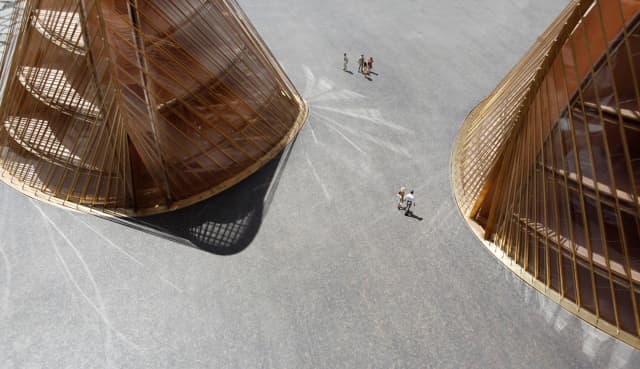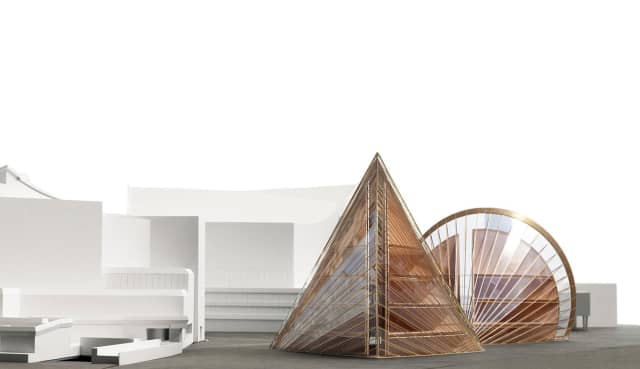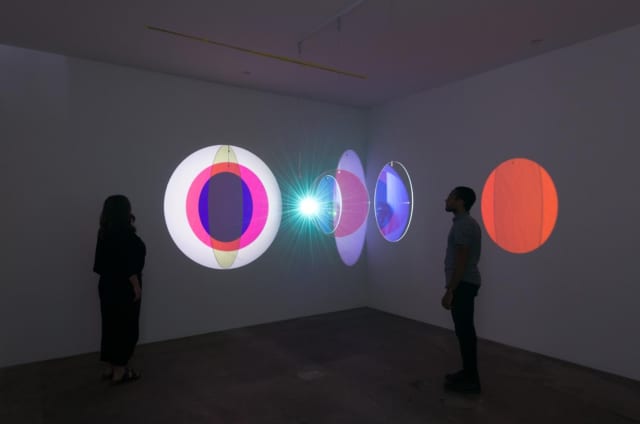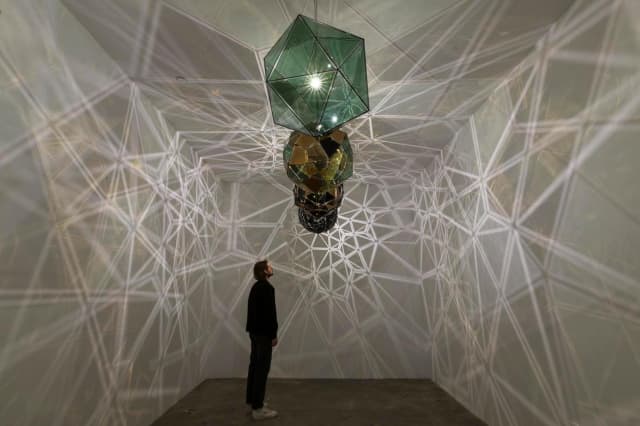Premiering on 25 November at Staatsoper, Berlin: Hippolyte et Aricie, by French baroque composer Jean-Phillipe Rameau, for which Olafur created sets, costumes, and overall lighting concept.
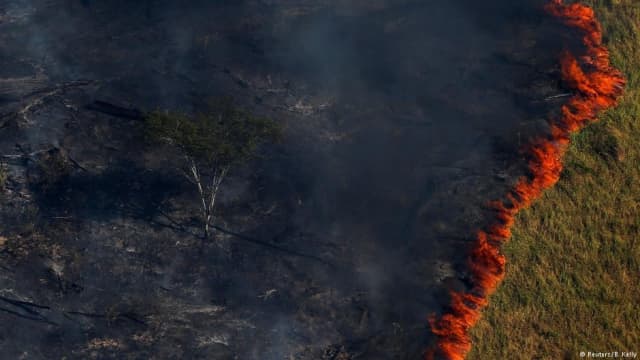
When our governments fail to protect our planet, it’s time to take action ourselves, to become aware of local initiatives and ways to get involved. In light of this past weekend’s election of Jair Bolsonaro as the new president of Brazil, we want to take some time to consider its imminent impact on the global climate crisis and options for moving forward. Brazil was an early leader of international climate protection initiatives back in the 1990s. With a population of over 200 million today, it is vital that Brazil stay committed to curbing carbon emissions and deforestation. Brazil is also home to 60% of the Amazon rainforest, known as the lungs of the earth. Bolsonaro has been vocal about his admiration for US president Trump’s decision to leave the Paris climate accord, as well as about abolishing Brazil’s environment ministry and opening up protected rainforest areas to industry. Indigenous communities in Brazil are also under grave threat from this seismic political shift. When governments fail we can put our resources into organisations advocating for environmental protections in Brazil, by contributing our time, money, and/or voices. For a map of local organisations working to make Brazil carbon neutral and save its rainforest, visit: 350.org Another important resource is Amazon Watch - an NGO founded in 1996 to protect the rainforest and advance the rights of indigenous peoples in the Amazon Basin. They partner with indigenous and environmental organisations in campaigns for human rights, corporate accountability, and the preservation of the Amazon's ecological systems. Amazon Watch’s work is focused on three main priorities: to stop Amazon destruction, to advance indigenous solutions, and to support climate justice. Visit amazonwatch.org - there are many ways in which you could get involved!

Reality oscillator, 2018
via Instagram
The new planet, 2014

Studio Other Spaces (SOS) is an office for art and architecture founded by artist Olafur Eliasson and architect Sebastian Behmann. In 2011, Eliasson and Behmann proposed an extension - based on the figure of the oloid - of the Berlin Philharmonie to complement and connect to Hans Scharoun’s Philharmonie and the Kammermusiksaal.
Homage to P. Schatz, 2012. The shape of this luminous sculpture derives from the oloid, a three-dimensional figure discovered by the scientist and mathematician Paul Schatz. The oloid’s form is conceived around two congruent circles, placed perpendicular to one another and with the centre of each intersected by the circumference of the other. Homage to P. Schatz references this geometrical discovery but exaggerates the form by elongating it, as if the work were pushing itself apart from within. A translucent skin that refracts light into its spectral colours adds another layer of visual ambiguit
Curator and art historian Michelle Kuo visited the studio in January 2018, sharing her research and why she is interested in how contemporary artists explore new systems for thinking about the future. Her extensive essay on Olafur introduces our new book; Experience. You can watch the full interview on SOE.TV
Today marks the 15th anniversary of The weather project at Tate Modern, London
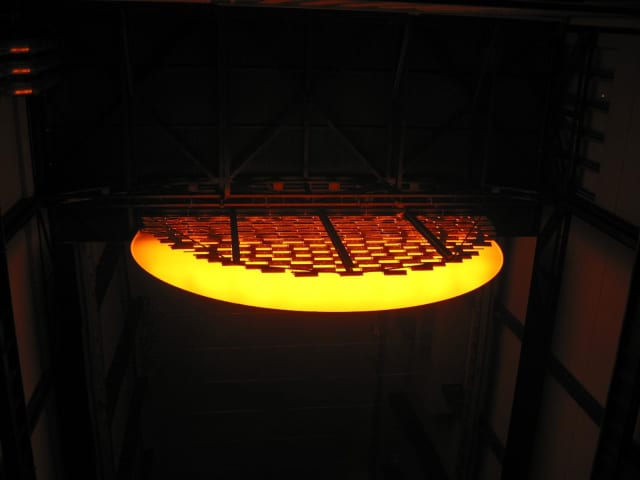
Experience – published by Phaidon yesterday
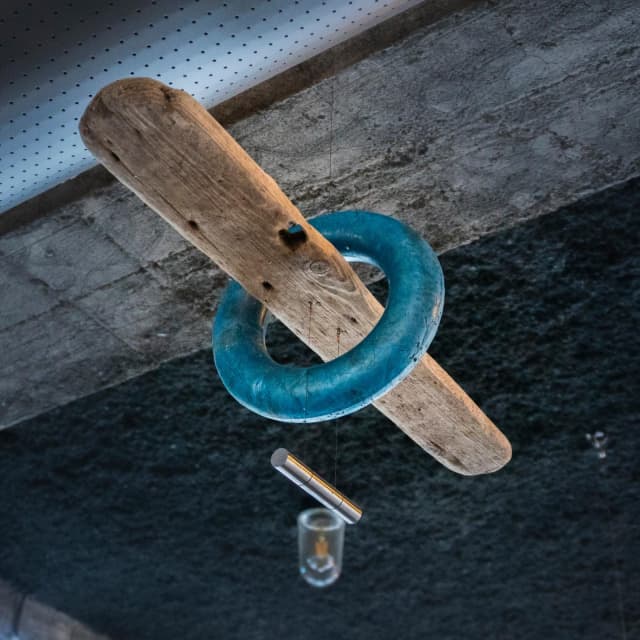
We're very excited to share with you our new book - Experience, published by Phaidon today. You can order your copy here. Olafur will be in London talking about the book and his practice in general on 26 October at The Southbank Centre, as a part of London Literature Festival.
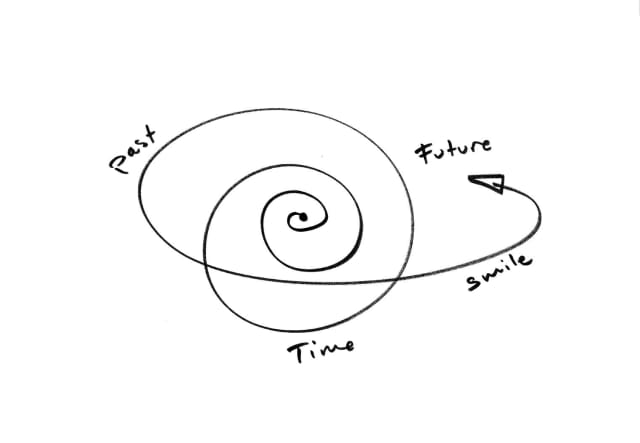
An Orchestra of Forces
On the surface of the earth, in a midsize European metropolis, stands a red-brick industrial building – an artist’s studio. Its concrete foundations hold ercely on to the planet, just as the planet holds fiercely on to the studio. Inside, on the ground floor, a stone table supports the weight of a sheet of paper; it feels the weight where the rough-hewn surface makes contact with the page.
The stone has been around for hundreds of years. The paper, much younger, enjoys the cold, solid support, aware that the oor and foundations beneath the table were built upon the very same earth from which the paper, as a sapling, once grew. The paper is mindful of its scarcity as a resource. It is about to engage with a pencil. The pencil gets together with its companion, the hand. It is a listening hand, in uid motion. The movements conjure a hand dance of pushing and being pushed. Sometimes the pencil leads, sometimes the hand. There’s some friction in the interaction.
The weight of the hand and of the pencil travels to the paper, onwards to the table, and further down to the foundations of the building and to the planet. The pencil is conscious of its ability to push the planet.
As the pencil pushes, the planet pushes back. The table readily hosts the downward and upward forces, negotiating. The meeting-up of trajectories gives rise to the drawing. As much as the relationship is vertical at rst glance, there are also sideways connections, and spinning and orbital activity. The drawing is drawing upon and travelling in various dimensions. At this moment, the pencil is catching up with an idea that has come from the future, but has not yet been scribbled down. Time is its companion. The listening hand enjoys the apparently abstract agenda of the pencil; it accepts the unspeakable openness of things. It is too soon, at this point in time, to introduce a subject.
Contribution to Hyperobjects for Artists - a reader, edited by Timothy Morton and Laura Copelin with Peyton Gardner
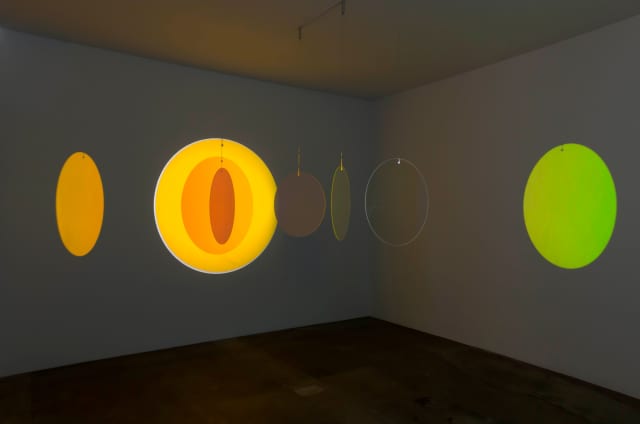
The speed of your attention, Tanya Bondakdar Gallery, Los Angeles
Photos by Jeff McLane
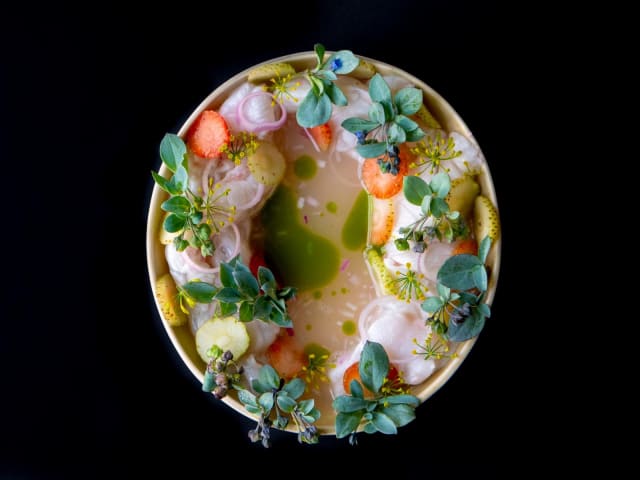
SOE KITCHEN 101 - a temporary culinary project in Reykjavik - is open until the end of the month. Check out the events programme, workshops, and menues, and book a seat at the long table on the project site.
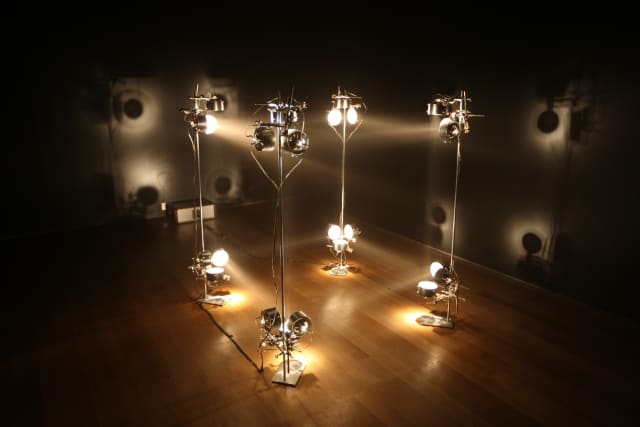
1m3 light, 1999. How does one visualise the ephemeral? How does one measure the non-visible? My son recently asked me whether he had saved much CO2 from being emitted into the air by using the Little Sun solar lamp I designed. He also wanted to know why, if a tonne of CO2 weighs so much, it does not drop to the ground. And where is it? To him, a tonne is heavy and physical and not an intangible mass distributed in the atmosphere. His questions made me realise how little I myself know about CO2. When I was my son’s age, back in the late seventies, there was no discussion of climate change. Nature was where I spent my summers, in a tent in the Icelandic highlands, a stark contrast to the Copenhagen I lived in. These natural and manmade realms could not be more separate. But today, there is no nature outside of human activity. Our survival and future depend on understanding the effects of CO2 consumption and acting on that understanding.
But what do we understand? What, for instance, is a tonne of CO2? Is it hot or cold, wet or dry? Perhaps it would help to know that one tonne of CO2 could be imagined as a cube the size of a three-storey house, or that, when frozen, it would form a block of dry ice about 0.67 cubic meters in size. But what does that actually tell me if I do not know how much CO2 I produce in a year or on an average day? What does it tell me if I do not sense my interrelationship with planet Earth?
We need science to tell us that the weight of CO2 is based on the atomic mass of the molecules. A scientist can tell me that a tonne of CO2 is equal to the energy expenditure of a house for about a month, a small car driven for two days non-stop, or a 747 flying for less than two minutes; and that because of the greenhouse effect, excessive amounts of CO2 in the atmosphere lead to global warming.
But, for many people, science alone is not enough to compel action. It struck me, when I was looking up this data, that it was familiar, that I had seen it more than once in the media, and I somehow knew most of it. So I asked myself why does knowing not translate into doing when so much is at stake?

https://www.youtube.com/watch?v=0uliC4S--IQ
Rainbow, a digital artwork, is now available on the Acute Art App
SOE KITCHEN 101, Reykjavik. Feature produced by Deutsche Welle/Kirsten Schumann
At the recent Pathway to Paris in San Francisco, Olafur capped off the Global Climate Action Summit by leading the audience in creating a Little Sunrise using 2,400 Little Sun solar lamps. After the performance, the lamps were sent, with the help of the Upaya Zen Center and Everest Awakening, to communities living in high-altitude, remote areas of Nepal without access to electricity. Founded by Rebecca Foon and Jesse Paris Smith, and organised in partnership with 350.org and the United Nations Development Programme, Pathway to Paris brings together musicians, artists, activists, academics, mayors, and innovators to help raise consciousness of the urgency of climate action and of solutions for turning the Paris Agreement into action.
Send a Little Sun lamp to someone in urgent need of energy: littlesunfoundation.org/donate
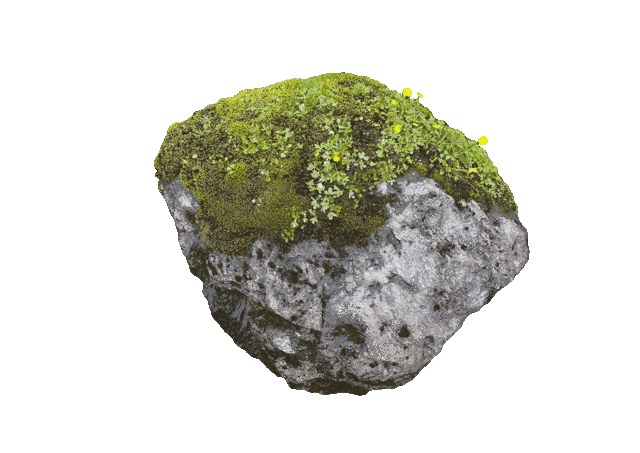
Herb picking workshop with Björk Bjarnadottir, SOE KITCHEN 101, Reykjavik. Check out the event programme here
Video by Timothee Lambrecq
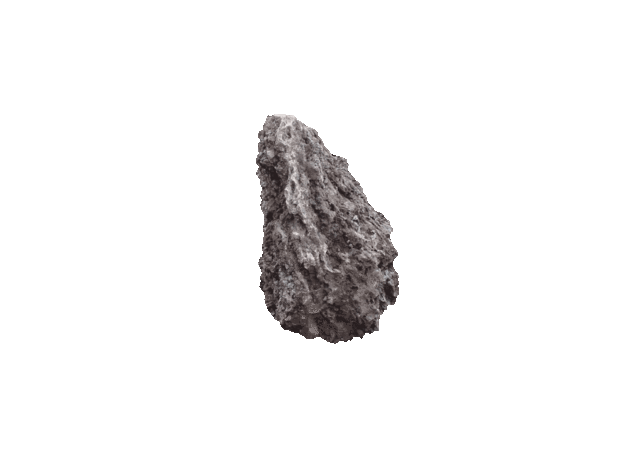
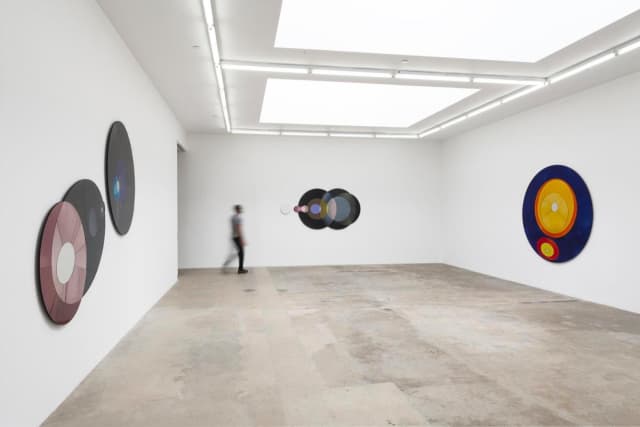
The speed of your attention, Tanya Bondakdar Gallery, Los Angeles
Photos by Jeff McLane
I’m extremely excited to share with you the new design of SOE.TV. Conceived with my studio team, this platform is a transmitter of concrete and abstract ideas, of topics that are relevant to my artistic practice and to issues central to the work of Studio Olafur Eliasson. SOE.TV is starting out locally, focusing on what I know well, but in the near future I hope that it will outgrow me, becoming a go-to platform that intertlaces culture and society. I’m positive that this clear, bold site, designed and developed by Alan Woo, will speak to art world and non–art audiences alike
